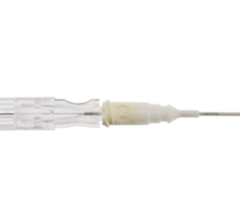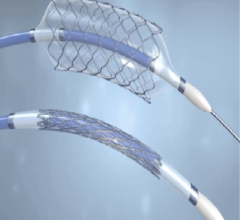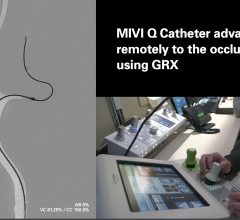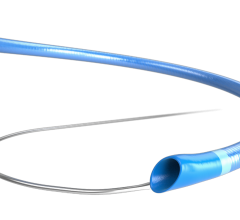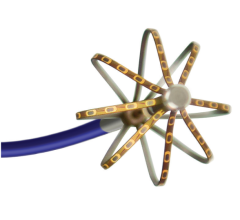March 31, 2008 - Use of a special catheter that sucks out, or aspirates, bits of plaque and blood clot that break loose during percutaneous coronary intervention (PCI) significantly enhances blood flow deep in the heart muscle in patients who are experiencing a heart attack, according to a recently published study. Now, a new analysis of the Thrombus Aspiration during Percutaneous Coronary Intervention in Acute Myocardial Infarction (TAPAS) study has shown that the link between deep myocardial perfusion and better clinical outcomes that was apparent at 30 days is still strong after one year.
The one-year results of the TAPAS study, which focused on patients suffering from a type of heart attack known as ST-elevation acute myocardial infarction (STEMI), are being reported today in a Late-Breaking Clinical Trials session at the SCAI Annual Scientific Sessions in Partnership with ACC i2 Summit (SCAI-ACCi2) in Chicago. SCAI-ACCi2 is a scientific meeting for practicing cardiovascular interventionalists sponsored by the Society for Cardiovascular Angiography and Interventions (SCAI) in partnership with the American College of Cardiology (ACC).
PCI is considered the best treatment for STEMI when it is delivered in a timely fashion by experienced clinicians, because it can rapidly and reliably open an artery on the surface of the heart that has been blocked by a blood clot. However, bits of atherosclerotic plaque and blood clot can break loose during angioplasty and stenting, traveling downstream to occlude the tiny vessels, or microcirculation, that supply blood deep into the heart muscle. When this happens—even if the surface artery has been successfully opened during PCI—the amount of tissue damaged by the heart attack tends to be greater, recovery of heart function reduced, and the risk of death higher.
In an attempt to improve myocardial perfusion after treatment for heart attack, various catheters have been developed that either aspirate or filter out debris that travels downstream during PCI. The TAPAS study was designed to test the effectiveness of the Export Aspiration Catheter (Medtronic).
Felix Zijlstra, M.D., Ph.D., University Medical Center Groningen, the Netherlands, was the study’s senior investigator. For the study, he and his colleagues recruited 1,071 patients with STEMI, randomly assigning 535 to PCI supported by the Export aspiration catheter and 536 to PCI using conventional techniques.
To assess the quality of myocardial perfusion, the researchers documented myocardial blush grade. A myocardial blush grade of 0 or 1 indicates that little or no X-ray dye has reached from the surface artery into the heart muscle, a sign that the microcirculation is blocked. A myocardial blush grade of 3 indicates that x-ray dye has reached deep into the heart muscle, a sign of good blood flow through the microcirculation. A myocardial blush grade of 2 falls in between. Analysis of the elevated ST-segment on the electrocardiogram—specifically, its return to a normal baseline—was also used to gauge the quality of blood flow to the heart muscle.
During angiography, researchers observed a blush grade of 0 or 1 in 17 percent of patients treated with the aid of the aspiration catheter and in 26 percent of patients treated with conventional PCI (p
At one-year follow-up, mortality was significantly lower in patients treated with the aspiration catheter (p=0.04), as was a combination of death and heart attack. A similar, highly significant relationship was observed between myocardial blush grade and death, or a combination of death and repeat heart attack (p=0.001).
The study team concluded that the degree of blood perfusion into the heart muscle helps to predict the patient’s clinical condition, and that aspiration of debris from the treated artery during PCI can reduce the risk of death and repeat heart attack, even one year later.
Dr. Zijlstra will present the results of the "The Thrombus Aspiration during Percutaneous Coronary Intervention in Acute Myocardial Infarction” (TAPAS) study on Sunday, March 30 at 8:15 a.m. CDT in the Grand Ballroom, S100.
For more information: www.acc08.org


 October 28, 2025
October 28, 2025 



